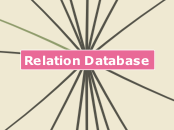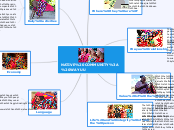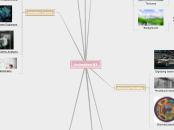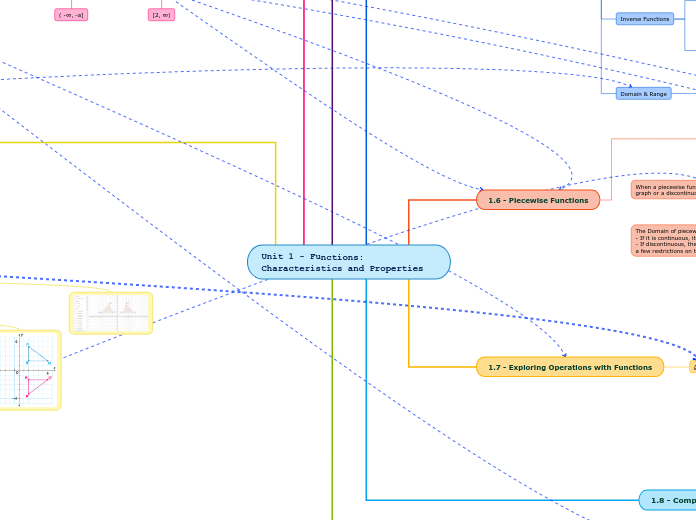a Thanh Tin Nguyen 7 éve
284
Sample Mind Map
The content covers a range of topics in the realm of databases, focusing on various lectures. Key subjects include the use of SQL commands such as SELECT, UPDATE, and DELETE, which are fundamental for interacting with relational databases.
Megnyitás
Relation Database Lecture 10 MySQL Basics MySQL Basics Example Lecture 11 Codd’s 12 Rules Rule 12: Non-Subversion Rule Rule 11: Distribution Independence Rule 10: Integrity Independence Rule 9: Logical Data Independence Rule 8: Physical Data Independence Rule 7: High-Level Insert, Update, and Delete Rule 6: View Updating Rule Rule 5: Comprehensive Data Sublanguage Rule Rule 4: Dynamic Online Catalog Based on the Relational Model Rule 3: Systematic Treatment of NULL Values Rule 2: Guaranteed Access Rule Rule 1: The Information Rule Lecture 12 Truncate Table Alter Table Modifying a column data type Modifying a constraint Rename a column Removing a column Adding a column Rename a table Drop Table Create Table Constraints SQL Tables Naming convention MySQL Data Types Large storage Date and time String Numeric Fixed point
Floating point
Integer
Types of SQL statements Data Control Language (DCL) Data Manipulation Language (DML) Data Definition Language (DDL) Lecture 13 DELETE UPDATE SELECT Lecture 14 JOIN – Example Renaming Columns Table Aliases RIGHT JOIN LEFT JOIN INNER JOIN CROSS JOIN More Complex SELECT Main topic Lecture 15 SUBQUERIES Aggregate Functions HAVING GROUP BY COUNT AVG SUM MIN MAX Lecture 16 Transparency DDB types Heterogeneous Homogeneous Characteristics of DDBMS Distributed Databases Deductive Databases Object-Oriented Databases Disdvantages Advantages Relational Databases Lecture 1 Important terms Structured Query Language (SQL) Database Management Systems (DBMS) Database Flat database vs. Relational database Relational database terminology information Data Examples In Griffith Property Listings Job Portal Flight Booking System Video-Sharing Portal Hotel Booking System – Typical example Overview Why do we need a database? Problems with traditional file systems. Controlled Redundancy
Security
Ease of Updating
Accuracy
Efficiency
Definition What is a database? Introduction to relational database Queries Normalisation Entity-Relationship Modelling Lecture 2 Database Architecture Objectives Three-Levels Internal or Physical Level Conceptual or Logical Level External Level Database Users Database Administrators (DBA) End Users Sophisticated Users
Naïve Users
Application Programmers Levels of Data Real World Data Importance of Data Data as a resource: Resource: Lecture 9 Boyce-Codd Normal Form Third Normal Form Second Normal Form First Normal Form Effect of Redundancy Deletion Anomaly
Update Anomaly
Insertion Anomaly
Flattened Table Problems Normal Forms Understanding Data Problem of Redundancy What is Normalisation? Data redundancy Data integrity Referential integrity
Entity integrity
Lecture 8 Mapping M:N Relationships Mapping 1:M Relationships Mapping 1:1 Relationships If not Combined Combine Entities Mapping Entity Type into a Relation Preparing to Map the ERD What is Mapping? Lecture 7 Constructing an ERD 9 steps to Constructing an ERD Relationship Representation (Cont) Attribute Representation (Cont) Entity Representation (Cont) Lecture 6 Cardinality of relationships Many to Many One to Many One to One Degree of a Relationship Replacing Ternary relationships Chen’s ERD Relationship Representation Attribute Representation Entity Representation Entity Relationship Model Types Relationship Attribute Entity Lecture 5 basic operations Querying (Cont) Relational Algebra Difference Intersection Union Cartesian Product Picking both rows and columns by composing operators Projection Selection Lecture 4 Relational Data Model Querying Referential Integrity Constraints Basic Constructs Database Design Methodology Physical Design Logical Design Conceptual Design Lecture 3 Components of DBMS Concurrency Control, Backup, & Recovery Manager Runtime Database Processor System Catalog/Data Dictionary Data Definition Language (DDL) and Data Manipulation Language (DML) Compilers User Interface Functions of DBMS Integrity Services Support for Data Communication Authorization Services Recovery Services Concurrency Control Services Transaction Support A User Accessible Catalog Data Processing









